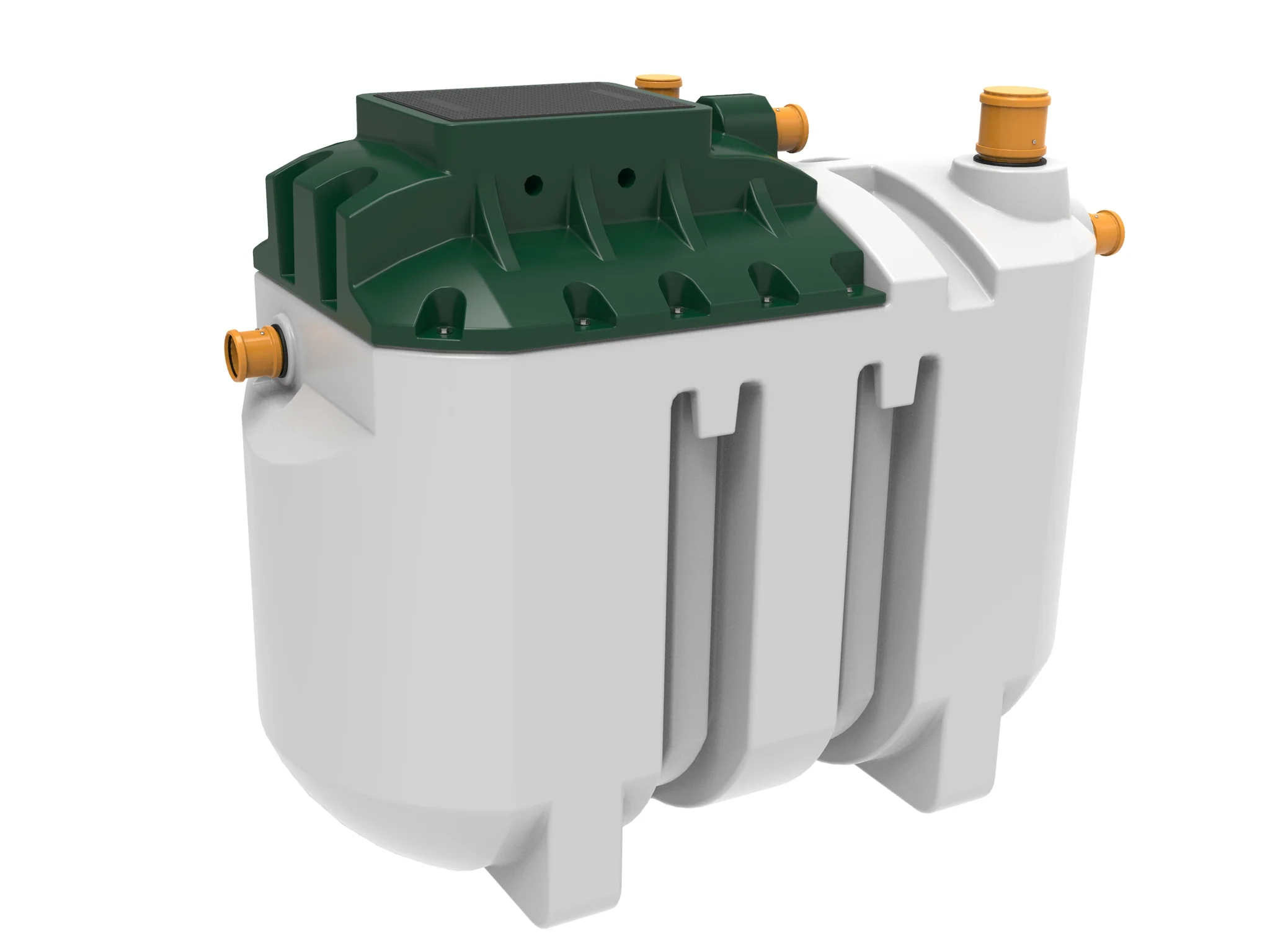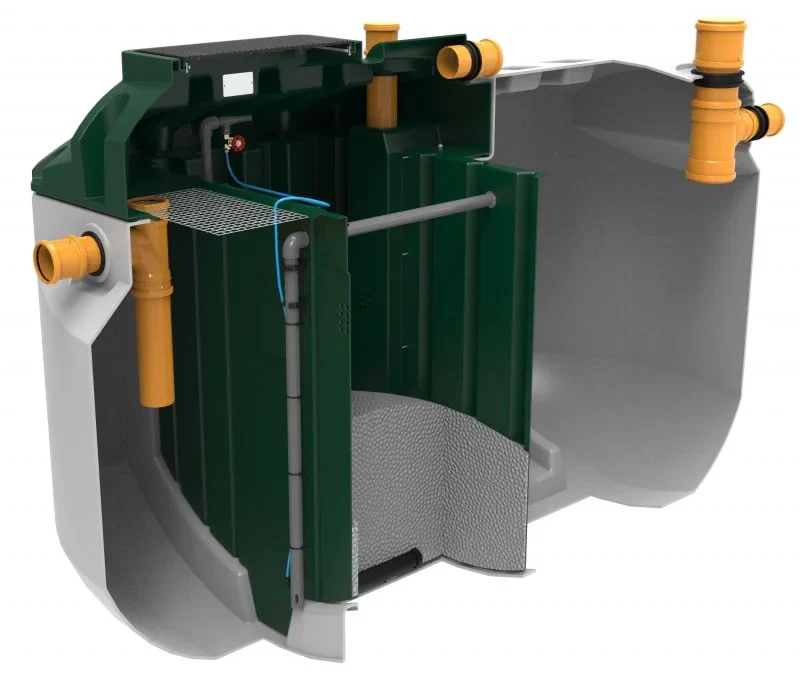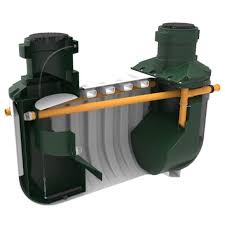Harlequin HydroClear 6 Person Sewage Treatment Plant
The Harlequin HydroClear 6 Person Sewage Treatment Plant is an advanced domestic wastewater treatment solution designed to serve households of up to six people. Using a highly efficient aeration process, it breaks down sewage to produce a clear, odorless effluent that can be safely discharged into the environment in compliance with regulatory standards. Compact and durable, the unit is easy to install and requires minimal maintenance, making it ideal for rural or off-mains properties. Manufactured from robust, corrosion-resistant materials, the HydroClear ensures reliable long-term performance while delivering exceptional environmental protection and energy efficiency for sustainable, cost-effective wastewater management.
Description
Sewage Treatment Plant
A sewage treatment plant (STP) is an advanced system designed to treat and recycle wastewater generated from households, commercial buildings, and industries before safely discharging it into the environment. In today’s world, where sustainable waste management and clean water are critical, investing in a reliable sewage treatment plant is no longer optional—it is essential. This product description provides a comprehensive overview of sewage treatment plants, their benefits, applications, and why they are the most effective wastewater management solution for residential, commercial, and industrial use.
What is a Sewage Treatment Plant?
A sewage treatment plant processes raw wastewater and removes contaminants, solids, and harmful microorganisms. The result is treated water that is safe for disposal into natural water bodies or for reuse in irrigation, flushing, or industrial purposes. Unlike simple septic tanks, STPs use mechanical, biological, and chemical processes to achieve high treatment efficiency, ensuring compliance with strict environmental standards.
Key Features of a Sewage Treatment Plant
| Feature | Benefit |
|---|---|
| Advanced Filtration | Removes solids, sludge, and harmful bacteria |
| Biological Processing | Uses microorganisms to break down organic waste efficiently |
| Energy-Efficient Design | Modern systems consume less power while maximizing output |
| Durability | Constructed with high-quality materials for long-term performance |
| Eco-Friendly Output | Produces treated water that can be reused for non-potable applications |
Why Invest in a Sewage Treatment Plant?
-
Regulatory Compliance – Meets local, national, and international wastewater discharge standards.
-
Environmental Protection – Prevents water pollution and protects soil and aquatic life.
-
Cost Savings – Reduces water bills by recycling treated water for irrigation, cleaning, or flushing.
-
Property Value – Increases the value of residential or commercial properties with eco-friendly infrastructure.
-
Scalability – Available in sizes for households, housing estates, hotels, schools, hospitals, and industries.
Applications of Sewage Treatment Plants
-
Residential Homes & Estates – Ensures clean wastewater management for families and communities.
-
Hotels & Resorts – Provides sustainable water recycling to reduce operational costs.
-
Hospitals & Schools – Maintains hygienic environments with reliable sewage treatment.
-
Industrial Facilities – Treats wastewater from factories before safe disposal or reuse.
-
Commercial Buildings – Ensures compliance with environmental standards for offices and malls.
How a Sewage Treatment Plant Works
-
Primary Treatment – Screens and grit chambers remove large particles and debris.
-
Secondary Treatment – Biological processes (activated sludge or biofilm reactors) break down organic matter.
-
Tertiary Treatment – Advanced filtration, chemical dosing, or UV disinfection for high-quality water output.
-
Sludge Treatment – Solid by-products are separated, dried, and can be used as fertilizer in some cases.
Advantages Over Septic Tanks
| Feature | Sewage Treatment Plant (STP) | Septic Tank |
|---|---|---|
| Treatment Level | High – produces reusable water | Basic – limited treatment |
| Environmental Impact | Eco-friendly, prevents groundwater pollution | Higher risk of pollution |
| Maintenance | Low to moderate with regular servicing | Requires frequent emptying |
| Compliance | Meets strict environmental regulations | Often does not meet modern standards |
Maintenance and Care
To maximize the efficiency of your sewage treatment plant, regular servicing is recommended:
-
Routine Inspection – Every 6–12 months.
-
Sludge Removal – Typically once a year depending on usage.
-
Component Check – Pumps, blowers, and filters should be serviced regularly.
-
Professional Monitoring – Certified technicians ensure compliance with discharge standards.
By maintaining your STP properly, you not only extend its lifespan but also ensure consistent environmental compliance.
FAQs
Q1: How long does a sewage treatment plant last?
A high-quality STP can last 20–25 years with proper maintenance.
Q2: Can the treated water be reused?
Yes, treated water can be safely reused for irrigation, flushing, and landscaping.
Q3: What is the difference between a septic tank and a sewage treatment plant?
A septic tank only provides basic treatment, while an STP delivers advanced, eco-friendly, and regulation-compliant treatment.
Q4: How much maintenance does an STP require?
Minimal maintenance is required—typically annual servicing and sludge removal.
Q5: Are sewage treatment plants suitable for small households?
Yes, STPs are available in compact designs for individual homes and larger models for estates and industries.
References
U.S. Environmental Protection Agency (EPA) – Wastewater Management
World Health Organization (WHO) – Water Sanitation and Hygiene Guidelines



Reviews
There are no reviews yet.